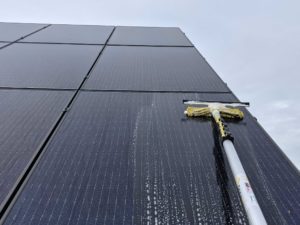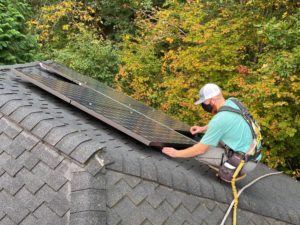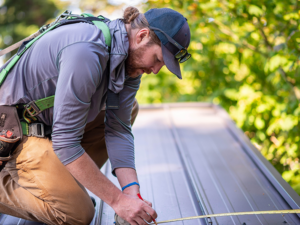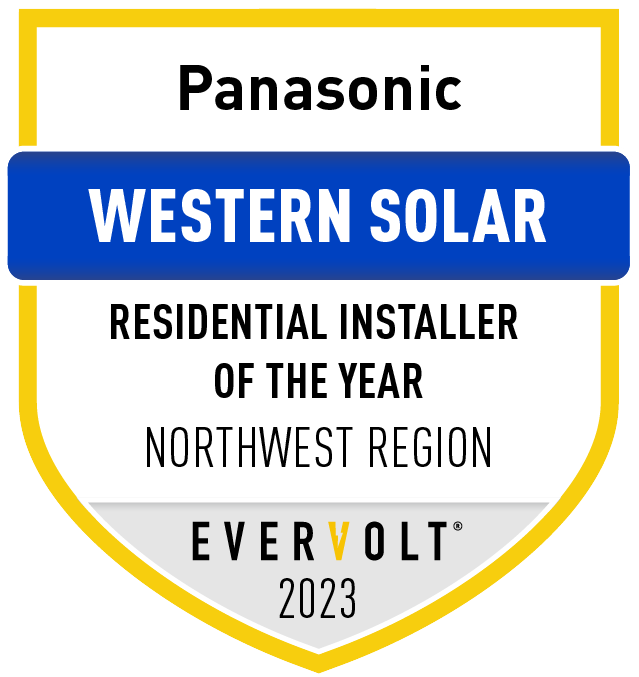So, you’re on the path to determine if installing solar is right for you—fantastic! In the evolving landscape of renewable energy, informed decision-making is paramount, but with so much to consider, where do you even start? Three of our four-person design team are actually Western Solar customers-turned-staff, so we’ve been there as well.
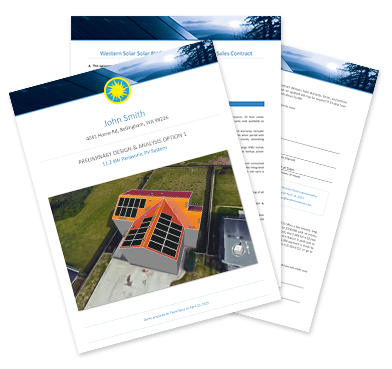
From wrapping your brain around net metering to deciphering contrasting design proposals, our aim is to provide guidance and equip you with the information required to make choices that align with your values, needs, and long-term goals.
Before you get started, here’s a look at our top five critical factors you should consider before—and during—obtaining a solar quote.
1. Keep current on net metering facts
In Washington, electric utilities are required to allow you to send excess electricity back onto the grid and credit your account in kilowatt-hours for the excess generation; this is called net metering (also referred to as 1:1, meaning when you export 1 kWh out to the grid, they give you a credit for 1 kWh which you can use at any time).
This year, our state’s largest electric utility, Puget Sound Energy, has started to approach their net metering cap. If you’re a PSE customer and plan to install solar—but haven’t been quite ready—this should serve as an incentive to get the ball rolling on your project and ensure you receive the existing net metering rates.
Unfortunately, some sales companies have turned this into a high-pressure sales tactic designed to rush customers into signing a contract. A significant number of customers have come to us asking for clarification on a specific net metering end date they’ve been given, or looking for documentation on the new net metering rates they were told would go into effect this summer.
Check out our recent article Net Metering with Puget Sound Energy for a closer look at Washington’s net metering law and what information is publicly available regarding PSE’s net metering program. But—please—don’t just take our word for it…
✅ Look for original sources. If you’ve received conflicting information from different solar installers, ask for supporting documentation and seek out confirmation from an unbiased third party. Any changes to net metering rates on a state or utility level will be clearly publicized, so that documentation should be readily available.
2. Put high-pressure on pause
Installing solar is a significant investment. We believe that nobody—NOBODY—should feel pressured into making that investment. Is it worth having your system installed under current net metering rates? Absolutely! But it’s not worth feeling uncomfortable and uncertain about your decision because you were pressured into it.
✅ Ask for time. There’s no rush, and should you need more time or additional information before making a decision, it’s more than reasonable to request that. If a company gives you push-back, that’s a clear indicator to take a step back. Keep in mind that your system is warrantied to last 25 years—realistically, even longer. The company you choose won’t only install your solar system; they’ll be your resource for questions or concerns, manage your online system monitoring, coordinate any potential warranty replacements/returns and service work, and more.
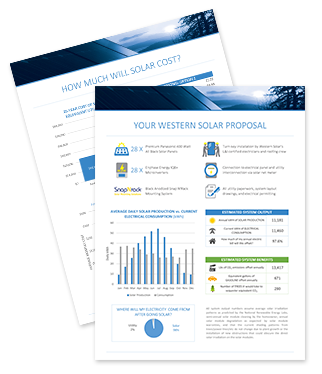
3. Dial in your baseline consumption data
At its most basic level, there are three key numbers to know when evaluating how much of your electric usage can be covered by solar: your annual electric consumption (kWh), annual production of the proposed system (kWh), and percentage of your usage which will be covered by the system.
Every system designer needs to know your consumption in order to calculate what percentage of your usage a proposed system would offset. However, if one company calculates your usage based on your monthly electric bill costs, while another estimates based on the graph of average daily kWh used (on PSE’s bill), you’ll see a significant discrepancy between how much electricity your system would offset, making it difficult to compare bids.
✅ Confirm baseline usage assumptions. Optimally sizing your system involves utilizing a year’s worth of monthly usage data, which you can export directly from your utility. This ensures that all system proposals work from the same starting point.
To help with that, we’ve assembled step-by-step export guides for three major utilities in our service area:
When you review bids, double-check that you’re not just looking at the percentage offset, but actual numbers for consumption and expected production. If you are unsure whether the bids are comparing apples to apples, our system designers are always available to step through an analysis with you.
4. Level the playing field for lifetime production
Even with the same starting point, each company presents data differently. Western Solar’s standard is to calculate lifetime production and costs based on the warrantied life of the solar panels we offer—25 years. From what we’ve seen, this is the most common, but some companies prefer to calculate lifetime production based on 20 or 30 years. All things being equal, 30 years of production data is always going to be higher than 25 years.
✅ Compare across the same time scale. If one proposal shows lifetime production numbers for a different time period than others, ask why they use that number and if they can adjust the calculations to better align with other bids you’re considering.
5. Look beyond the system price
The total price of a solar PV system varies depending on which equipment is proposed. Premium solar modules are priced higher than economy modules, but carry better warranties; microinverters cost more up-front than string inverters, but offer a higher level of performance, reliable module-level monitoring, and longer warranties. The equipment best suited to you is going to depend on your priorities, budget, and site.
✅ Solicit comparable quotes. The lowest price isn’t always the best value. Make sure you receive comparable quotes and have enough information to make an informed decision about what’s best for you. Aside from labor costs and mounting hardware, expect to see the most difference when considering modules and inverters:
-
- Solar modules should have a similar rated capacity/efficiency, and the majority of installers in our region offer modules from well-known, established manufacturers. The most significant pricing differences will correspond to how comprehensive the warranties are. Find out why your designer prefers that product over others, and how long they’ve been installing it.
- Microinverters vs. string inverters—the age-old question (for us, anyway) and most common sticking point when evaluating bids. You’ll see a significant price difference between these two inverter technologies, so ask about the benefits and drawbacks.
The bottom line
Ultimately, the decision to go solar is one that should be made with confidence and certainty. Equip yourself with up-to-date and accurate information, seek clarity, and make choices that align with your goals and priorities. With Puget Sound Energy’s net metering cap approaching, the urgency to lock in existing rates should not overshadow your right to make a thoughtful choice. Take the time to sift through information, clarifying discrepancies and asking for original sources.
And finally, don’t let the microinverters vs. string inverters debate be a sticking point. Engage with your designer to get a clear understanding of the benefits and drawbacks of each option. In our industry, it’s natural for preferences to exist, but your understanding of these technologies will empower you to choose the best fit for your solar project—and will serve you for years to come.
Western Solar is the premier solar, battery storage, and energy efficiency design and installation company based in Bellingham, WA. We have thousands of solar PV systems in our portfolio and over 21 years of operations in residential and commercial installation. With a growing team of 26 solar professionals, including three 01 Electricians and a dedicated commercial project management team, we have the experience and staff to complete even the most complex projects.

